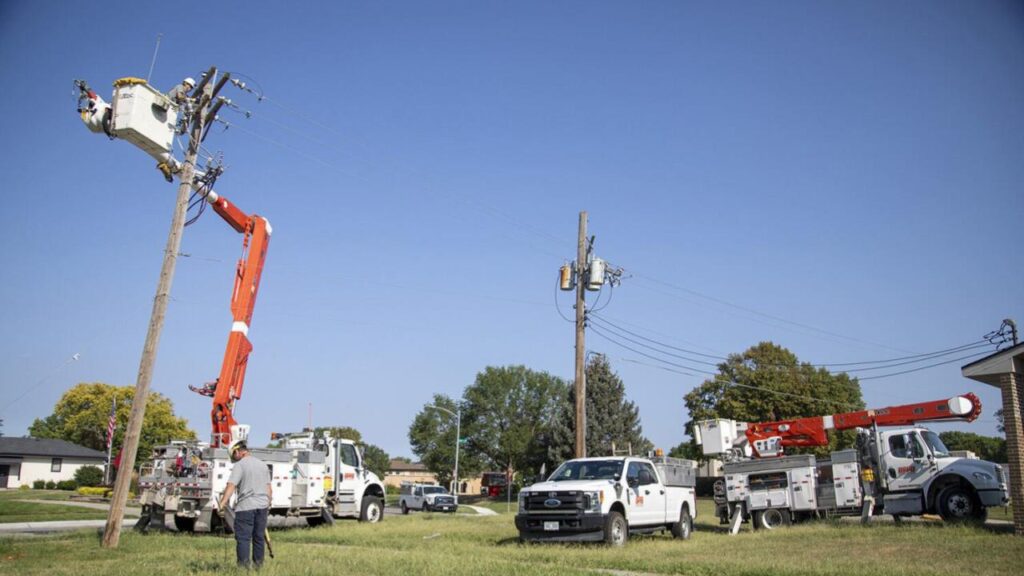A major power outage in Douglas County, Oregon left more than 8,000 homes and businesses in the dark early Tuesday morning. This widespread blackout, which at its peak affected over 35,000 customers from two different utility providers—Pacific Power and Douglas Electric Cooperative—disrupted daily life across the region, shutting down schools, stalling businesses, and raising serious concerns about the resilience of the local power infrastructure.

Huge Power Outage Hits Douglas County
| Point | Details |
|---|---|
| Affected Area | Douglas County, Oregon |
| Total Impacted Customers | Over 35,000 customers combined (8,000+ Douglas Electric Cooperative, 27,000+ Pacific Power) |
| Utilities Involved | Douglas Electric Cooperative and Pacific Power |
| Outage Cause | Substation equipment failure (Pacific Power), transmission issues (DEC) |
| Start Time | Early morning, Tuesday, January 21, 2025 |
| Restoration Time | Most DEC customers restored by 9:45 a.m.; Pacific Power restored most by noon |
| Current Status | Only 127 Pacific Power customers without electricity as of last update |
| Official Advisory | Schools closed; residents asked to avoid unnecessary travel |
This Douglas County power outage wasn’t just a random hiccup—it was a wake-up call. It exposed how even dual utility providers can experience widespread failures if the infrastructure isn’t built to handle cascading issues. Fortunately, prompt action by both Pacific Power and Douglas Electric Cooperative prevented this from turning into a full-blown crisis.
What Triggered the Power Outage in Douglas County?
The outage was first reported in the early hours of Tuesday, January 21, 2025. According to Pacific Power, an equipment failure at a major substation near Roseburg was the root cause of their blackout. Meanwhile, Douglas Electric Cooperative (DEC) reported that their outage wasn’t linked to Pacific Power’s failure. Instead, they blamed issues with a third-party transmission provider.
Now here’s the kicker: both blackouts happened around the same time, catching thousands of people off guard—especially those in areas like Umpqua, Melrose, Lookingglass, Tenmile, and Camas Valley.
How Bad Did It Get?
At the height of the blackout:
- Pacific Power had over 27,000 customers without electricity.
- Douglas Electric Cooperative confirmed around 8,000+ customers were hit.
Businesses had to shut their doors, schools were closed for the day, and emergency services went into high gear to ensure safety. Several reports on KPIC News confirmed chaos across the county.
“It was like the entire county just stopped moving,” said a local café owner in Roseburg.
Restoration Timeline: Who Got the Lights Back On?
Restoration efforts kicked in almost immediately:
- By 9:45 a.m., DEC had restored power to most of their customers.
- By 12:00 noon, Pacific Power reported just 127 customers still without power.
Both utilities took a cautious approach in flipping the switch back on. Their goal? Prevent another equipment blowout during re-energization.
What Should You Do During a Power Outage?
Let’s keep it real—blackouts suck. But here’s how to stay safe:
- Don’t panic. First rule of any emergency—stay calm.
- Unplug electronics. It avoids surge damage when the power comes back.
- Use flashlights—not candles. House fires spike during blackouts because of open flames.
- Keep your fridge closed. Every time you open it, you risk spoiling your food.
- Tune into battery-powered radios or use mobile data for local emergency alerts.
Is Douglas County’s Power Infrastructure Too Fragile?
This outage has sparked debate about the resiliency of Oregon’s energy grid. If two separate providers can go down simultaneously, it raises questions:
- Are we relying too much on aging transmission infrastructure?
- Do our substations have proper failsafe mechanisms?
- Should the county invest in microgrids or solar backup systems?
According to the U.S. Energy Information Administration (EIA), power outages have doubled in frequency over the last decade, largely due to extreme weather, equipment failures, and cyberattacks.
Economic Hit: What’s the Damage?
It’s still too early for exact dollar estimates, but here’s a ballpark:
- Small businesses likely lost thousands in sales.
- Perishable goods in homes and grocery stores spoiled.
- School closures disrupted schedules for thousands of students and working parents.
Local chambers of commerce are already urging utilities to compensate affected businesses through relief programs or discounts on future bills.
Was This Preventable? Experts Weigh In
Energy analysts say that although some equipment failure is unpredictable, better grid monitoring systems could have caught early signs of trouble. More robust investments in grid modernization could also minimize domino-effect failures like these.
And let’s be honest—Douglas County isn’t the only place this is happening. Across America, rural counties are seeing a spike in outages due to outdated infrastructure.
Community Response and Support
Despite the trouble, local communities showed up for each other:
- Volunteers distributed hot meals to elderly residents.
- Schools opened temporary warming shelters.
- Neighbors checked in on each other like it was second nature.
It’s heartwarming—and honestly, very “small-town America.”
Frequently Asked Questions (FAQs)
Q1: How can I find out if my power is scheduled to be restored?
Visit your provider’s outage map: Pacific Power or DEC.
Q2: Will I be reimbursed for spoiled food or lost income?
Some utilities offer claim forms for power outage losses. Contact your provider directly.
Q3: How can I prepare better for future outages?
Invest in a battery-powered radio, portable chargers, and backup lighting. Consider solar generators if your budget allows.
Q4: Can I install solar panels with battery storage to avoid outages?
Absolutely. Systems like Tesla Powerwall or Enphase IQ can keep essentials running during blackouts.
Q5: Who’s responsible for fixing these infrastructure issues?
Utility companies are primarily responsible, but federal and state regulators oversee safety standards and long-term upgrades.






